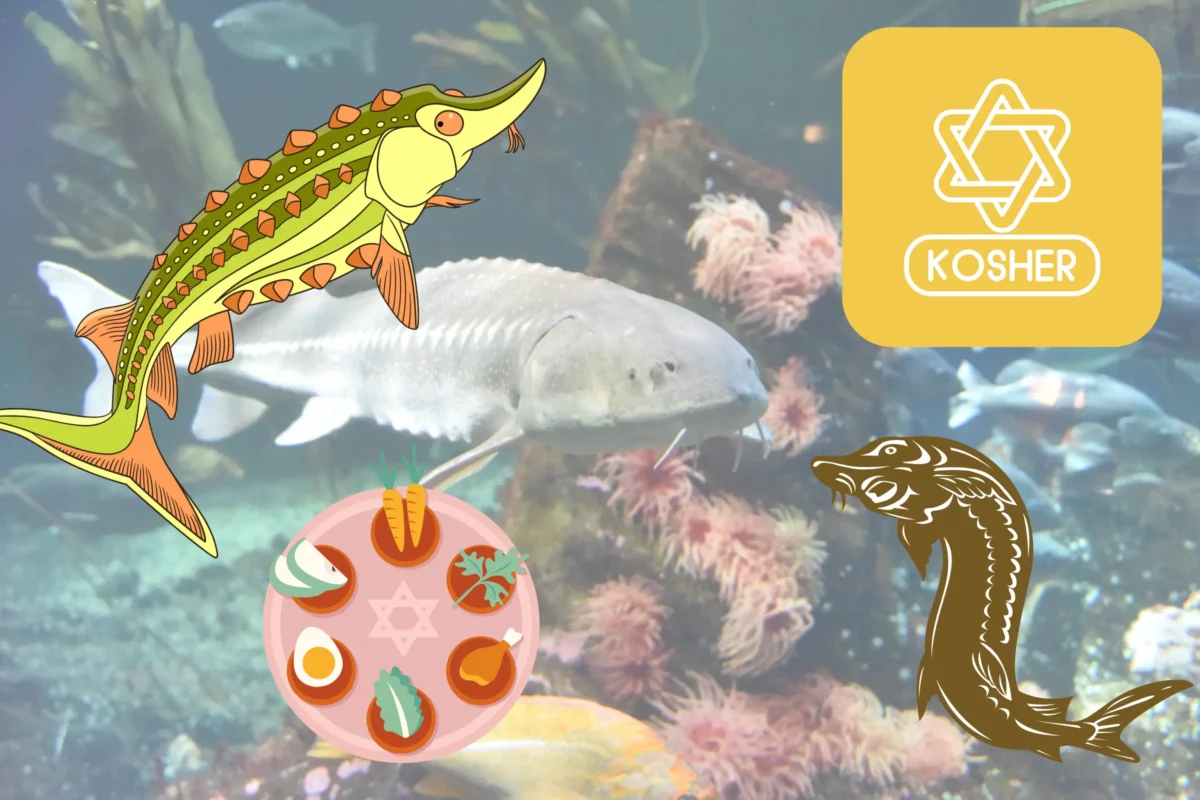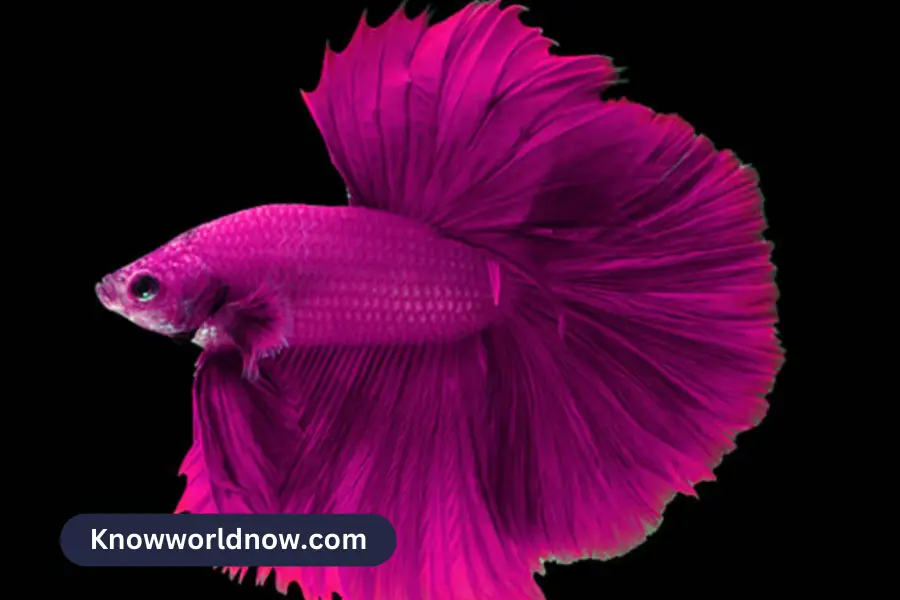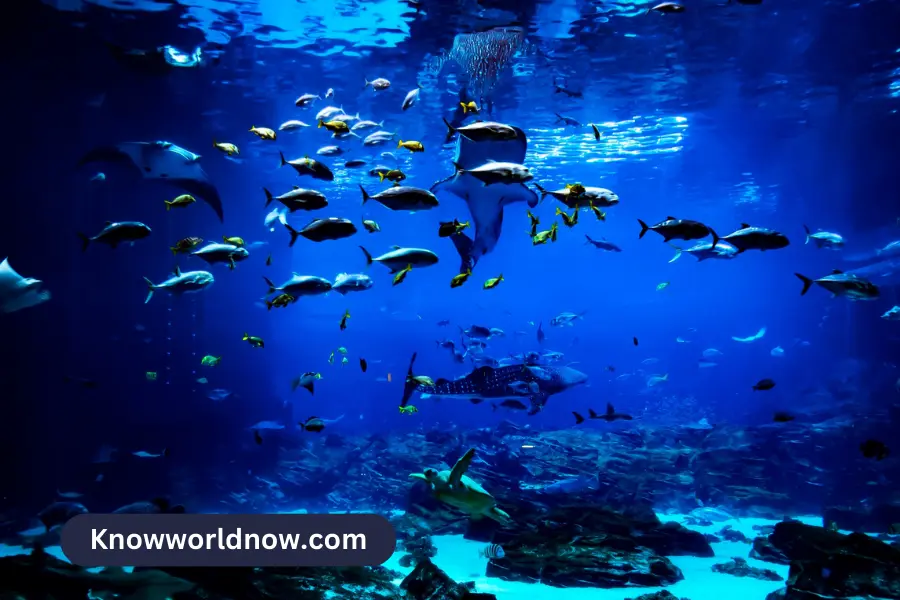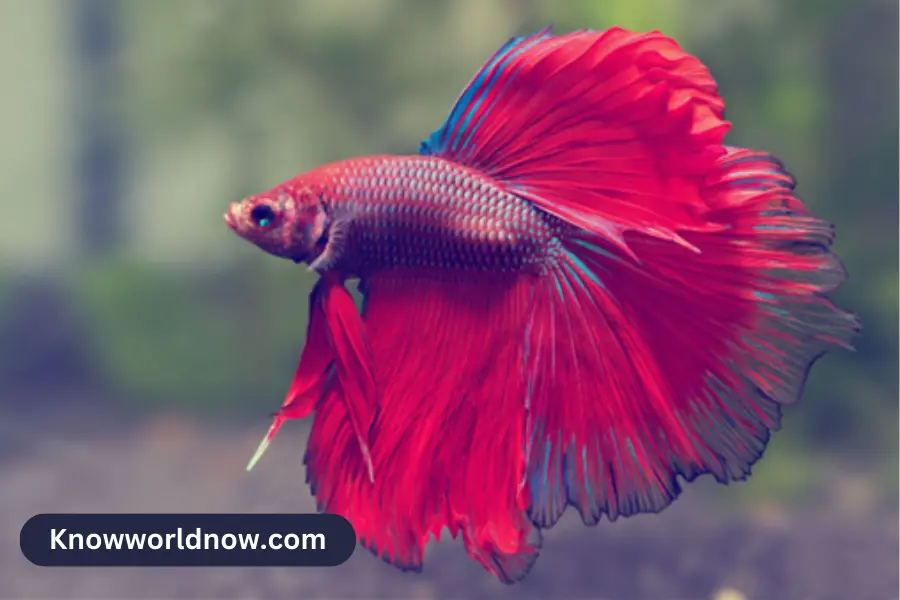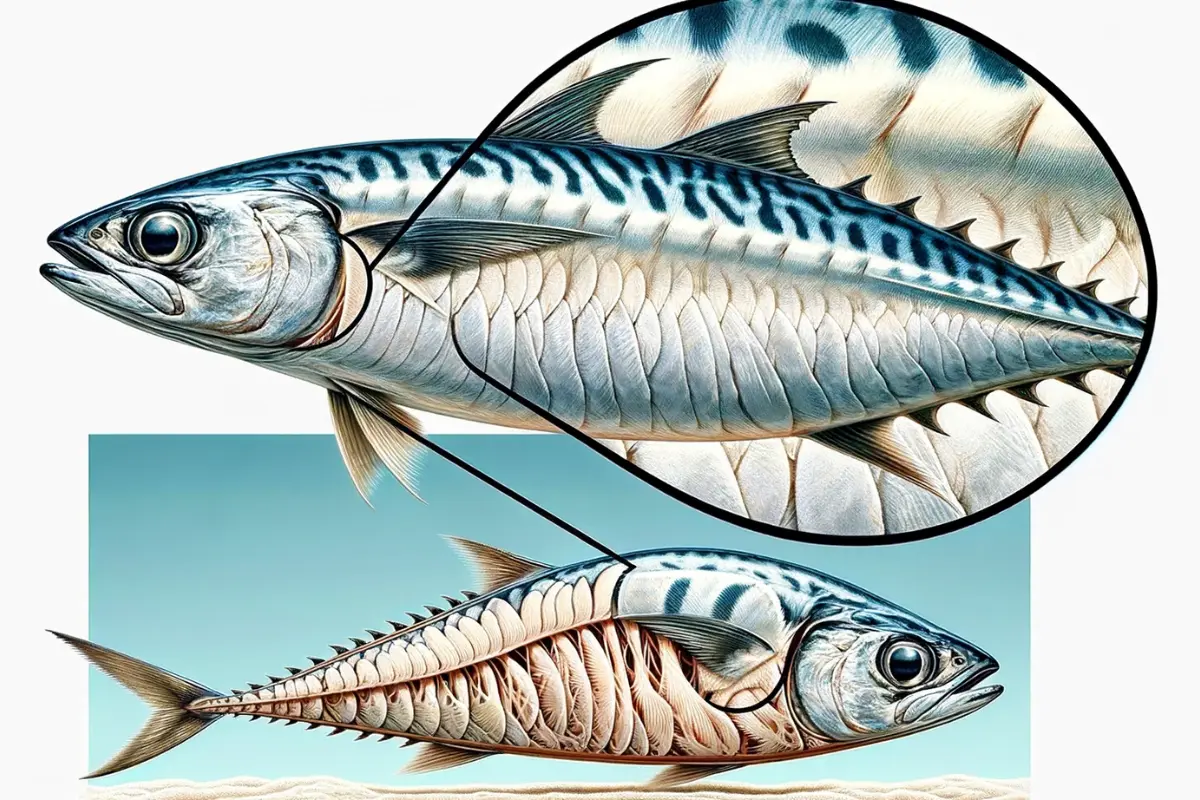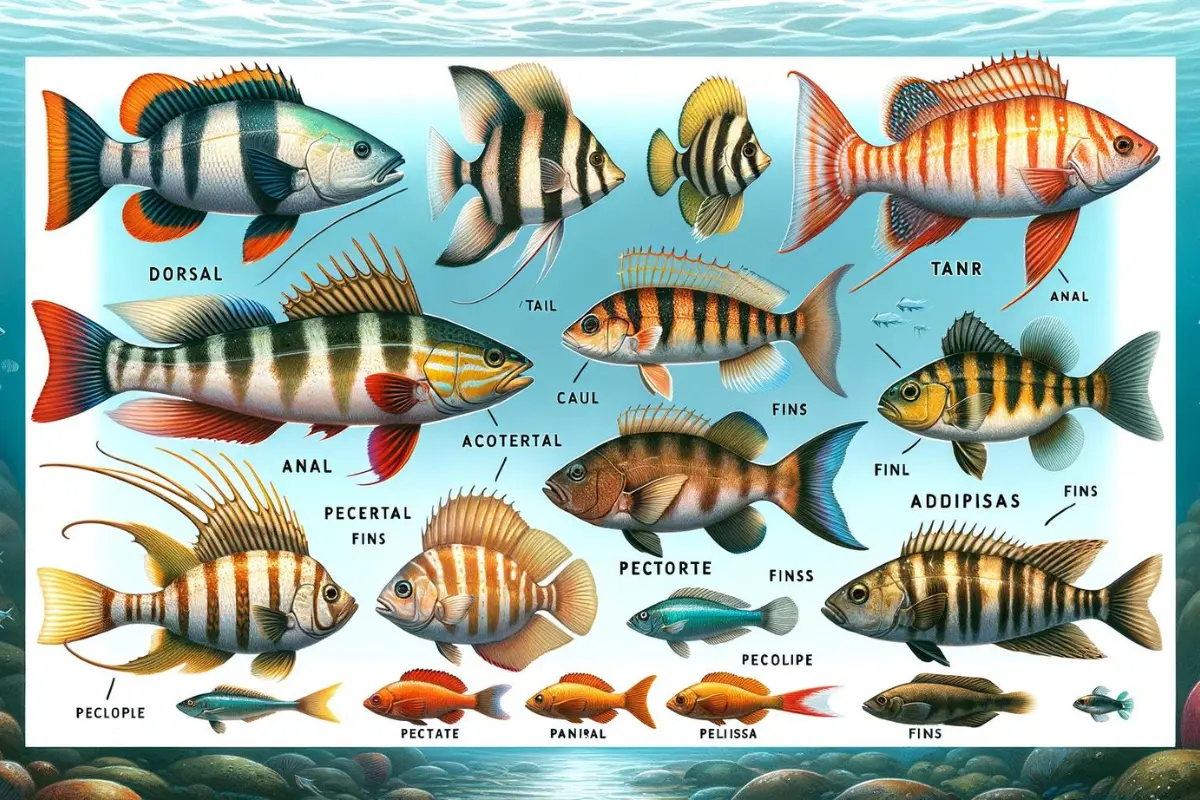Sturgeon is not a kosher fish despite having both fins and scales. This is because you cannot remove the scales of the fish without ripping the skin of the fish. The scales of the fish are not overlapping and are called ganoid scales.
A kosher fish needs to have both fins and easily removable scales like tuna or salmon. The scale of sturgeon breaks this rule. Though sturgeon is non-kosher, many people eat them, including Jews. The fish is scientifically safe and edible from head to tail.
Like most common fishes, sturgeon has five different types of fins. It includes a dorsal fin, a pair of pectoral and pelvic, and an unpaired anal fin and tail fin.
Why Is Sturgeon Not Kosher?
The main reason for sturgeon not being a kosher fish is its ganoid scales. These scales are harder than cycloid scales and avoid overlapping. The common features of their scales include the following:
- Unlike cycloid scales, you cannot scrape off the scales without cutting the skin and flesh of the fish.
- These scales are thick and hard to break
- They have a diamond-like shape, and they are not flexible
- The scales are often composed of bone and ganoin. Ganoin is a hard substance that contributes to its durability.
However, it is not completely abandoned by the Jewish community. Some people consider it kosher as it still has scales. The argument is almost similar to swordfish. Many people think swordfish is kosher, while some think it is not, as it lacks scales during adulthood.
Benefits of Ganoid Scales for Sturgeon Fish
The uniqueness of ganoid scales provides sturgeon fish with several benefits. From protection to thermoregulation, it has different functions to perform.
1. Develops a Protective Armor
The primary function of scales is to provide protection to the delicate skin of fish. The scales of a sturgeon do the same for them. The scales create a strong, hard barrier around the skin that protects them from external injuries. It makes them less vulnerable to the environment and predators.
2. Thermoregulation Support
The ganoid scales help sturgeon maintain a good temperature for their body throughout the water. Water temperature changes in different parts of the river or sea. The external barrier of the scales protects them from sudden temperature rise and fall. By helping with temperature regulation, scales help them swim around safely in the water.
3. Longevity and Durability
Ganoid scales are more durable than cycloid scales. These hard scales provide the fish with more safety against external injuries than cycloid scales. Besides, these scales do not disappear as the fish age. They provide lifelong protection to the fish.
Fins of Sturgeon Fish
Sturgeon has five different types of fins and a total of 7 fins. These fins contribute to their survival in the aquatic environment.
1. Dorsal Fin
They have one unpaired dorsal fin on the back of their body. Unlike salmon, tuna, or mackerel, the dorsal fan is located near the rear end. Most fishes have their primary fins near the head. Sturgeon, in contrast, have several trouts on the back of their body right behind the head. This unique feature of the fish bestows them with several benefits.
- The position of the dorsal fin near the tail enhances stability.
- Having the dorsal fin closer to the tail might contribute to the sturgeon’s maneuverability.
As the dorsal fin is located at the back of the body and is not very big, it makes its appearance not as big as other fish. Taller dorsal fins usually make a fish look bigger.
2. Pelvic Fins
A sturgeon has a pair of pelvic fins near the anal fin on the bottom side of the fish. These smaller fins contribute greatly to the maintenance of balance and stability. The fins work together with other fins to help the fish move upward and stay upright.
Some species of sturgeon use the pelvic fins for courtship activities. They make different gestures to attract the opposite gender using the pelvic fins. Another important task of the fins is to help with braking.
3. Pectoral Fins
Pectoral fins are paired and are positioned near the head and bottom of the fish. Like other fins, they play several roles as well. These fins aid in providing stability and managing balance while swimming. Sturgeons control their movements by extending and retracting the fins.
Being a bottom feeder, sturgeon roam around the floor of the river or sea they reside in. They often use the pectoral fins like hands to pick or grab food and put it into their mouth. The fins are also used to capture prey.
4. Anal Fin
The anal fin stands in between the tail fin and the pelvic fins. It is an unpaired fin that contributes to stabilization and directional control. Helping in temperature regulation is an important contribution of the fin in sturgeon’s life. The addition of the fin also helps the fish get a streamlined structure, which promotes a hydrodynamic profile for them. The anal fin works explicitly to help the fish’s streamlines movement.
5. Caudal Fin
The caudal fin, also called the tail fin, is the last part of the body of sturgeon fish. It plays a major role in swimming. They use the fins to generate power for swimming. Fish move forward by using the tail for propulsion. While other fins are mostly used for stabilization and steering, the caudal fin accelerates the speed.
The tail fin is flexible and very heavy. They use the fin to scare away their predators. With the swift movement of the tail, they change the direction of their movement and avoid collision.
Is Sturgeon Edible?
Yes, the sturgeon is edible. Kosher or not kosher, sturgeon is consumed by a wide range of people. It has a mild taste, which is liked by most people. The fish is cooked in different ways, and there are some world-famous recipes in its name. Caviar, sashimi, simmer, and sturgeon grill a few of them.
You should not consume it in a large amount, though. The fish lives in the sea, and because of its large size, it can contain high amounts of mercury. The exact amount of mercury depends on various factors. Where the fish was caught is an important one of them.
For the safety of your health, avoid overeating it. However, eating it in a measured amount is actually beneficial for your health. It also adds variety to your diet.
Food Value of Sturgeon
| Nutrition | Amount per 28 g |
| Calories | 49 |
| Total Fat | 1.2g |
| Saturated Fat | 0.3g |
| Cholesterol | 23 mg |
| Dietary Fiber | 0g |
| Sugar | 0g |
| Protein | 8.9g |
| Vitamin D | 4.6mcg |
| Potassium | 107mg |
| Sodium | 210mg |
| Calcium | 4.82 mg |
| Magnesium | 13.32 mg |
| Water | 17.72 g |
| Niacin | 3.147 mg |
Health Benefits of Eating Sturgeon Fish
Sturgeon can be a good addition to your diet if consumed in a safe and balanced amount. Here are some of the major benefits you will enjoy from the fish:
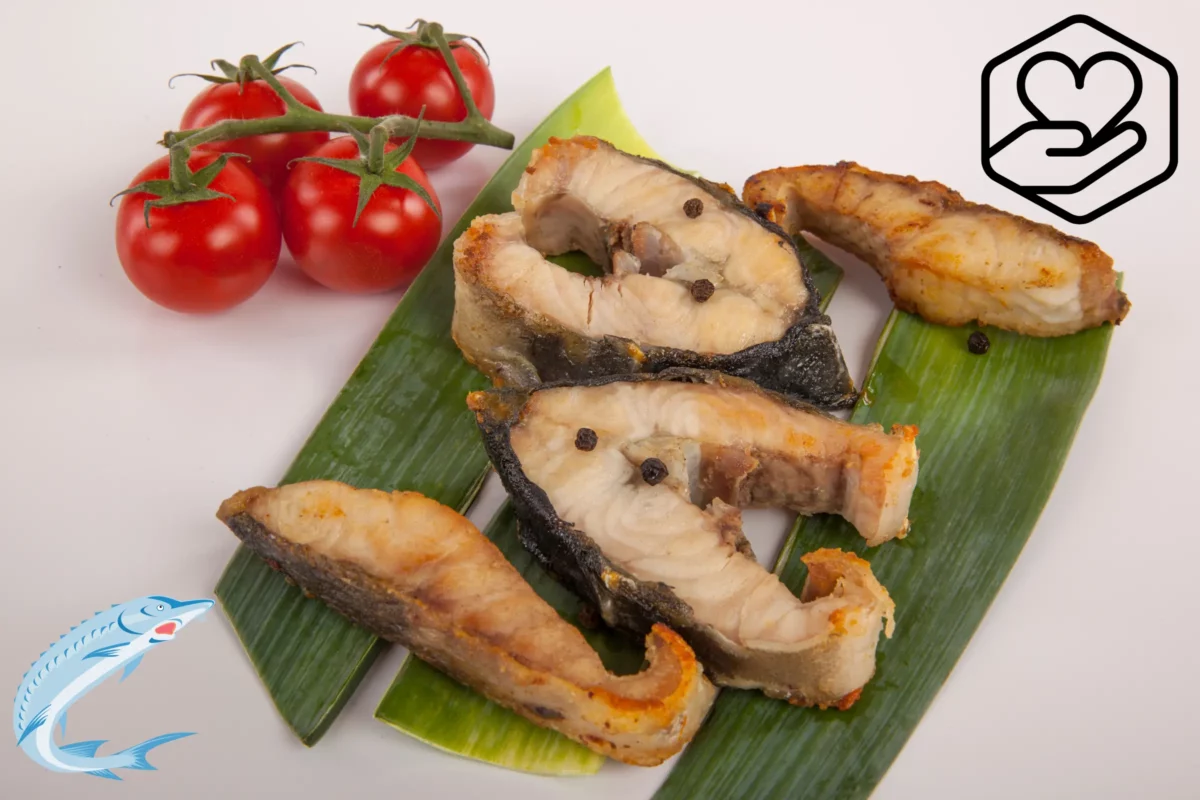
1. Nutrient-dense Calories
28g of sturgeon can offer you 49 calories. You can consider it a good amount. On top of that, it contains no sugar or carbohydrates and a very small amount of fat. It makes the food a good option to have sometimes.
2. Gives You Protein
Your body needs protein for various functions, and you can get some from sturgeon. The fish is relatively a good source of protein in comparison to other seafood. Protein can boost your immune system and help you stay healthy. Additionally, protein can contribute to muscle development and physical growth.
3. Contains Different Minerals
Another benefit of eating sturgeon is that the fish has different minerals to offer. It has magnesium, sodium, potassium, and magnesium. These minerals play a crucial role in your physical fitness. Minerals make your bones stronger.
However, the fish contains comparatively higher sodium. Your body needs the mineral for fluid balance, muscle contraction, and to maintain pH balance. Excess consumption can cause several harmful effects.
Calcium and magnesium can straighten the bones. Additionally, there is vitamin D in the fish. The presence of vitamin D enhances calcium absorption in your body.
4. Supports Your Heart Health
Having a balanced amount of sturgeon can improve your heart health as it contains omega-3. Omega-3 is a vital nutrient that can reduce blood triglycerides, lower blood pressure, and prevent plaque buildup. Besides, it contributes to brain function and can help you with anxiety and depression.
Is There Any Reason for Not Eating Sturgeon?
Despite several benefits, there are some good reasons for you not to eat sturgeon in high amounts or at all. Here are a few of them.
1. Sturgeon Is Non-Kosher
A major reason not to eat the fish is that it is not kosher. Jewish people believe that fish or food that are not kosher are impure. It does not necessarily mean that the food is harmful to your health. Instead, it reflects on the impurity of the fish and states that it is harmful to your soul. For the sake of the purity of your soul, you have to avoid eating this fish.
2. Contains Mercury
The level of mercury in sturgeon depends on the place the fish is caught. If the fish is from a farm, then you can expect it to have a low level of mercury. However, if the fish was caught in an open space, it might not be very safe to eat. Fish in the wild often tend to possess high amounts of mercury.
3. PCBs Are Found
Some studies show that polychlorinated biphenyls are found where sturgeon eat. Excessive consumption of this compound is injurious to your health. Frequent eating of sturgeon fish may lead to learning and behavioral problems. Experts suggest not to eat the fish more than once a month.
5 Popular Dishes Made of Sturgeon
You can make a number of delicious and healthy dishes with sturgeon. Here are some of the world-famous sturgeon-made dishes that you can try.
- Grilled wild sturgeon with lime cilantro sauce. A top choice for fish lovers who enjoy their fish grilled with spicy seasoning. The addition of lime sauce makes it mouthwatering.
- Smoked sturgeon salad with lemony dressing. It is a little complex but brings many flavors to the table. You had better try it in a restaurant. Otherwise, you may have to purchase a lot of different ingredients from the market.
- Sturgeon filets baked in sauerkraut. It is a great combination of sweet and sour. You will remember the fish for a long time.
- Pan-seared sturgeon with chanterelles & baby Yukon. The dish is served in a classy way. Many sturgeon lovers believe it is best to eat sturgeon.
- Sturgeon with pancetta. It is a dish containing both sturgeon and pancetta. The recipe is simple, and you can try it at home, too.
Are There Other Non-Kosher Fish?
Yes, sturgeon is not the only non kosher. There are plenty of other fish that are prohibited from eating, according to the rabbis of the Jewish community. Here is a list of non-kosher fish.
- Catfish
- Shark
- Eel
- Swordfish
- Monkfish
- Sturgeon (beluga, osetra, and sevruga caviar)
- Shellfish (shrimp, crab, lobster)
- Octopus
- Clams
- Mussels
The feature of kosher and non kosher is more religious than health or science. They tend to avoid non-kosher fish as it is prohibited by Jewish law. Fish without fins or removable scales are considered impure. This is a way to show reverence to God and show their faith in divinity.
What Fish Is Considered Kosher?
There are many fish species with both fins and removable scales. For eating fish, Jewish people mostly prefer to eat kosher food, which was recommended by the rabbi.
- Salmon
- Tuna
- Halibut
- Trout
- Haddock
- Cod
- Flounder
- Sole
- Sardines
- Mackerel
- Carp
- Whitefish
- Perch
- Pike
- Branzino
- Red Snapper
- Grouper
- Mahi-Mahi
- Tilapia
- Sea Bass
These kosher fishes are safe to eat according to both Jewish law and science. They contain low amounts of mercury and offer you a wide variety of nutrients that are needed for optimal health.
FAQ
Is sturgeon caviar kosher?
No, sturgeon caviar is not kosher. Caviar refers to the fish eggs of sturgeon. Sturgeon caviar is a popular dish. However, since sturgeon itself is not kosher, caviar is also considered non kosher.
Can sturgeon use fish ladders?
No, sturgeon usually cannot climb ladders because of their large size. Fish ladders are usually made for smaller fish like salmon, tuna, etc. Sturgeon finds it difficult to move through these ladders.
Is white sturgeon kosher?
No, white sturgeon are not kosher. No species of sturgeon possesses easily removable scales. The ganoid scales of the fish cannot meet the requirements of kosher fish and so are known as non kosher.
Is a sturgeon a salmon?
No, sturgeon are not salmon. The two are different species. There are some similarities between salmon and baby or juvenile sturgeon. However, you are less likely to mistake a sturgeon for a salmon because of the size difference.
Is sturgeon fish rare?
No, sturgeon are not yet classified as rare fish but are identified as endangered animals. Studies claim that 85% of sturgeon species are at risk of extinction. It is illegal to kill or catch sturgeon in many places. You can purchase them from farms only.
What is the world’s largest sturgeon?
The beluga sturgeon is known as the largest sweetwater fish. The biggest of them was caught in 1827 in the Volga Detta. The fish was 7.2 m long and weighed 3,463 lb. Many other species have been caught over the years, weighing more than 2000 pounds.
Conclusion
Surgeons are not Kosher fish despite having both fins and scales. Its scales do not match the characteristics of kosher fish. Despite not being kosher, the fish is very popular among fish lovers. Different dishes made of fish are popularly eaten across the world. If you want to stick to the community law, you have to abandon eating the fish.

